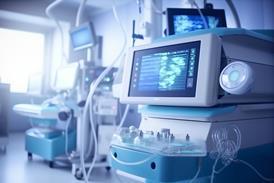All Medical devices articles – Page 2
-
 Journal
JournalRegulatory challenges and opportunities facing hearing aid manufacturers in Europe
In a world where many people are living longer but not all are living well and age-related hearing loss affects approximately 20% of the European population aged 65 or older – hearing aids address a medical need which for the most part remains unmet. With increasing evidence ...
-
 Journal
JournalA year of clinical trials under IVDR:
a sponsor’s perspectiveThe new EU in vitro diagnostic medical devices regulation (IVDR) extends to medical use of in vitro diagnostics (IVDs) in clinical trials, in addition to marketed IVDs. Although compliance to some aspects has been required since the Date of Application on 26 May 2022, there has been ...
-

-
 Journal
JournalMedical device standards update: June 2023
This edition of our regular column updates the progress of applicable standards to March 2023.
-
 Industry news
Industry newsMHRA plans medical device technologies streamlined pathway
UK agency aims to make route-to-market much more straightforward for manufacturers with Innovative Devices Access Pathway.
-

-
 Journal
JournalIs consulting in regulatory affairs your next career path?
Navigating the corporate ladder isn’t always clear cut. Along the way you may move in and out of the industry, stay in one position for too long, or even jump from specialist to director. Some ditch the politics all together and become their own boss. What is it like being a consultant, contingent worker, or contractor?
-
 Journal
JournalIMDRF: Origins, purpose and current work
In a landscape of rapidly evolving technologies, the International Medical Device Regulatory Forum (IMDRF) aims to accelerate international medical device harmonisation. A summary of the work being undertaken by the IMDRF.
-
 Case Study
Case StudyUnderstanding key components of a clinical evaluation
Written by Angela Siebeneck, Director of Regulatory Strategy and Policy from Certara based on an online seminar presentation, made in collaboration with TOPRA and Certera, given on 15 November 2022.
-
 Journal
JournalIVDs and medical devices — post-market surveillance and clinical follow-up requirements
Written by Kirsten Van Garsse from Qarad (part of the QbD Group) based on an online seminar presentation, made in collaboration with TOPRA and QbD, given on 6 December 2022 by Kirsten Van Garsse and Anne-Sophie Grell from QbD.
-
 Meeting Report
Meeting ReportMD2: How to approach Artificial Intelligence
and Cybersecurity now and in the futureCybersecurity is important for medical devices – those designed before the era of cybersecurity are most vulnerable to malware attacks and industry are searching for solutions.
-
![[FROM LEFT] Alwin van den Broek and Walter van Der Weegan](https://ds982gbwnvyso.cloudfront.net/Pictures/100x67/4/3/0/430_5m4a4635_toprasymposium2022_day3_20221019_77249.jpg) Meeting Report
Meeting ReportMD3: Clinical investigation from
a virtual setting perspectiveThere is a variety of devices currently used to collect PROs and the data gathered in relation to orthopaedic surgery. The forthcoming AI, cyber resilience, data governance, and digital market acts are proposed as the regulatory landscape of the future.
-
 Meeting Report
Meeting ReportMD4: Challenges and opportunities for
small companies and start-upsWhen developing novel products, small companies and start-ups must understand the regulatory pathways to market. NBs are providing support to industry in its transition to the EU Medical Device Regulation, but NBs are in high demand.
-
 Meeting Report
Meeting ReportMD5: How to maintain your medical device
on the market and fulfil ongoing obligations
in the post-launch phaseEUDAMED is an integral part of the MDR and the actors, UDI and certificate modules are now live. The full effect of EUDAMED will not be realised until it is fully functional – all actors should accelerate their preparation for EUDAMED and upload information as soon as modules go live.
-
 Journal
JournalNavigating the MDR’s heightened surveillance and performance requirements
Substantial changes to post-market surveillance, post-market clinical follow-up and the new requirement to include a summary of safety and clinical performance, have all placed greater obligations on medical device manufacturers. The changes introduced by the Medical Device Regulation (MDR), have the overarching objective of improving patient safety and providing greater ...
-
 Journal
JournalOne year experience on EU Medical Devices Regulation (MDR) 2017/745 for single integral drug-device combination products
Since 26 May 2021, Article 117 of the MDR asks for a notified body opinion (NBOp) to be included in the marketing authorisation applications (MAAs) for medicinal products that are a single integral drug-device combination.
-
 Journal
JournalMedical device standards update: February 2022
This edition of our regular column updates the progress of applicable horizontal standards to February 2022
-
 Journal
JournalThe national competent authorities of Belgium and Luxembourg share their views about the e-PIL Pilot
Q: Why do the authorities support the e-PIL Pilot and why do you think it is important? A: Iris Geussens: Digitalisation is the future, and the pharmaceutical sector cannot stay behind. The advantage of an electronic package leaflet is that you always have access ...
-
 Journal
JournalPlanning for the future: sustainable medical devices
Pharmaceutical and medical device companies are increasingly looking at new ways to incorporate sustainability into their strategies in a bid to help the environment. While existing medical device standards do not address sustainability explicitly, ISO working groups and others are now considering sustainability as an important component of medical device development. The heavily regulated world of medical devices will likely see sustainability standards emerging in the next decade.
-
 Journal
JournalElectronic leaflet pilot in Belgium and Luxembourg hospitals
The e-PIL Pilot was set-up in Belgium and Luxembourg with the objective to demonstrate the equivalence between the paper patient information leaflet and the electronic patient information leaflet in providing information on the safe and effective use of medicines in hospital setting. The first results of the Pilot are promising ...
- Previous Page
- Page1
- Page2
- Page3
- Next Page



















